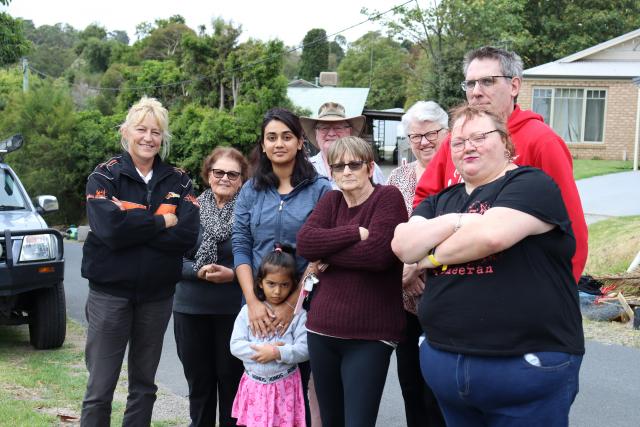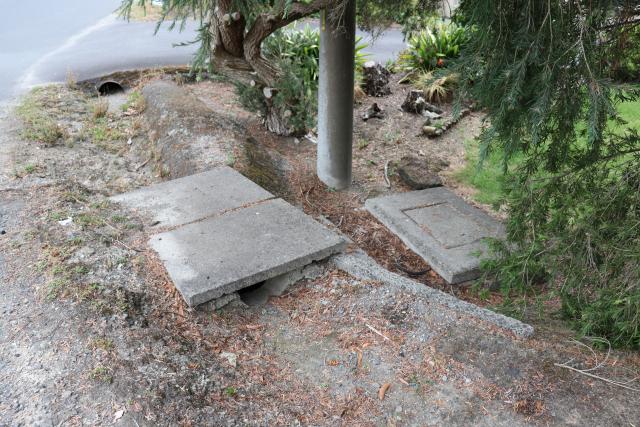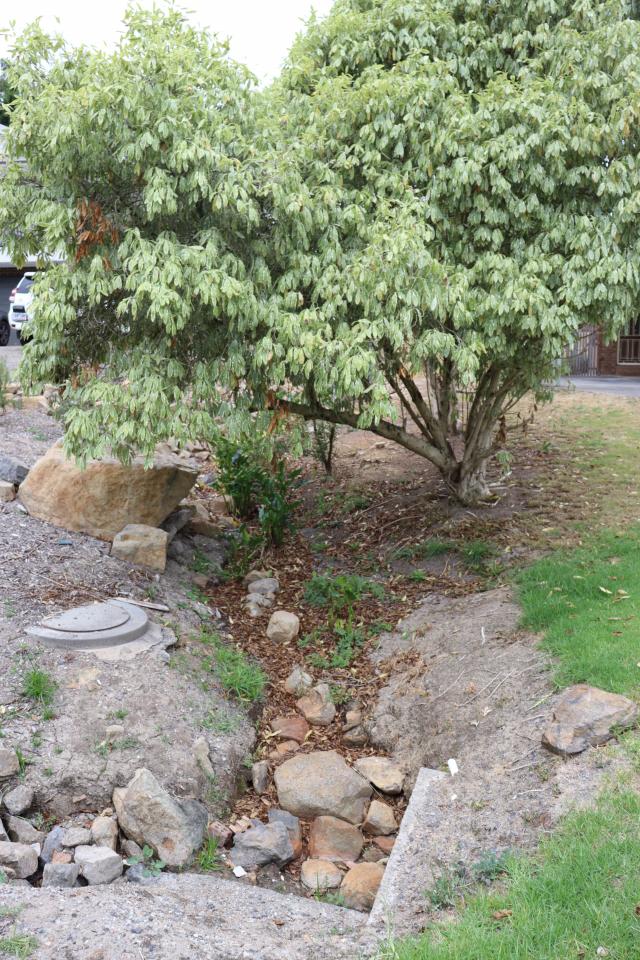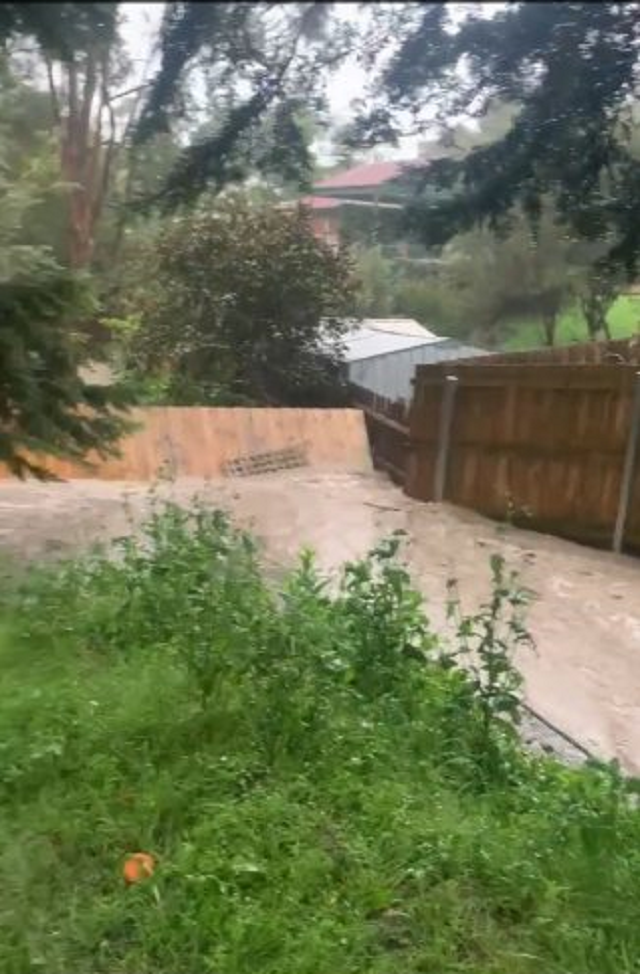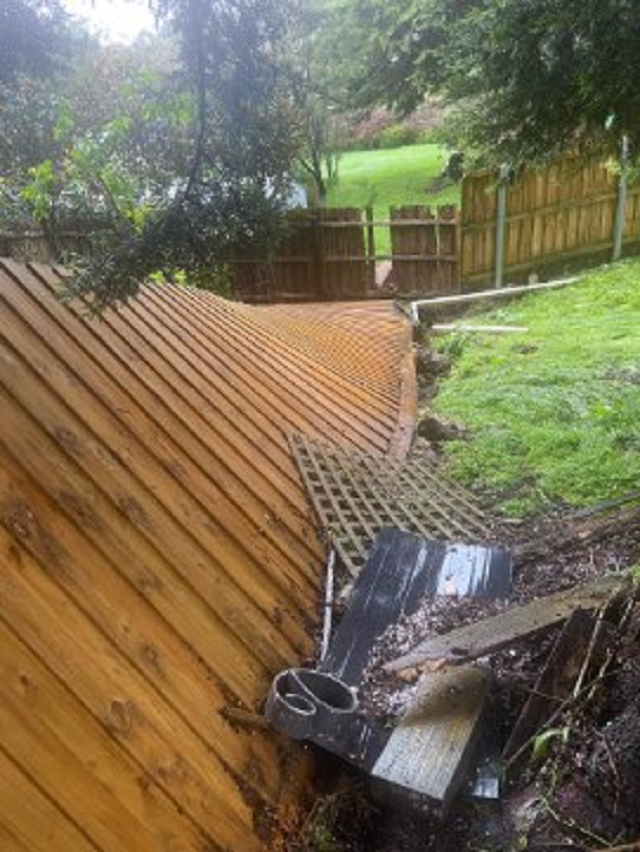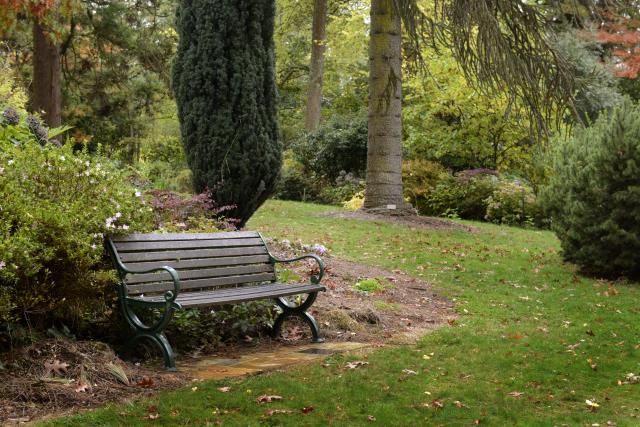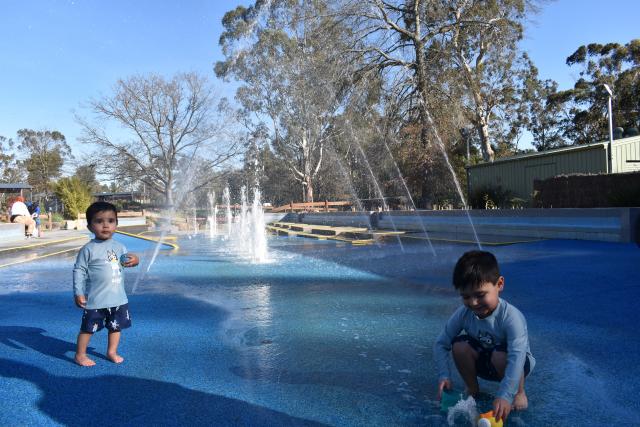After experiencing some of the worst flooding in at least a decade during October’s heavy downpour, residents of Bristol Crescent, Lilydale remain dismayed at the lack of infrastructure upgrades to drainage.
With an easement running from Valencia Road, through multiple backyards before hitting Bristol Crescent and more properties, the overflowing drains caused havoc for eight residents.
“The pipes aren’t big enough and water just ran through like a river, it took out everyone’s fences right down to the roundabout,” Bristol Crescent resident Sonya said.
While residents agree the pipes weren’t big enough to handle the heavy downpour, they said flooding happens more often than not due to blocked drains.
As autumn and winter approaches, residents are concerned they will be replacing fences again and repairing damage if the problem is not fixed.
“My concern is the pit across the road. They never clean it and I spoke to the shire and they said ‘oh, when it’s full just ring us and we’ll come empty it’. It’s not really my job,” Sonya said.
“The water runs straight down my driveway. It’s totalled everything under the house. It runs right down the side into my shed. I’ve gone through my insurance company five times and I’m not going through an insurance company again.”
Trying to mitigate some of the damage to her property herself, Sonya paid $6000 to have drainage installed throughout her driveway to prevent excess water flow.
Understanding of the fact the October floods was an unusual event, fellow Bristol Crescent resident Lucy said she watched one day as a drain was emptied near her house, leaving her baffled.
“It was just full of twigs and leaves. So they came up, four of them in two trucks, they cleaned it all out of the drain and then they set it next to the drain and then they left. So the next rain, it all washed back in and they haven’t been back since,” she said.
Brendon and his wife Beryl have lived on Bristol Crescent for 36 years and said this was not the first time they had experienced major flooding, particularly because of the development of the area.
“All of the houses [on Fortune Avenue] drain onto the train line and eventually, it goes under the train line through culverts, pipes, then proceeds down these little tributaries, which have probably always been there but that’s not the point,” Brendon said.
“If they keep building more water catching areas, it’s putting more water into the drains and we’ve always had water come through our place from houses above and I don’t know how many driveways have ended up down from my place.”
In the last 10 years, Brendon said he had seen severe flooding at least twice and “they call it a once in 100 year event that comes every 10 years”.
Yarra Ranges Council built environment and infrastructure director Hjalmar Philipp said it is not uncommon for drains during major storm events to not cope with excess water.
“Most of the drainage in the municipality has been designed to cater for a minor storm event, which is the standard design parameter adopted and used for most of the drainage infrastructure throughout the state,” he said.
“In events that exceed the design parameters of Council’s drainage system it is not uncommon for drains not to cope.”
Mr Philipp confirmed during the initial subdivision the easement was identified as a natural watercourse but in the 1980s “an easement was formally created” with an upgrade from an open drain to pipes.
Flowing the natural contours of the land, Mr Philipp said the easement “acts as an overland flow path”.
“If a council drain reaches its capacity during a significant storm event, the water may surcharge from the drainage system (typically at a drainage pit) and run overland,” Mr Philipp said.
This happened to Valencia Road resident Jyoti and her family during the October floods when the concrete drainage pit and small pipe could not hold all the water.
For Jennifer, who lives with her husband Brian on Valencia Road in her parents’ house of 50 years, this was never meant to be the case.
“When my parents first moved here I was two and, these are my mum’s words not mine, she said, ‘when we first moved in here we were told that no one was ever going to be behind us because of this problem’ but because of population growth they had to,” Jennifer said.
Taking it on themselves, particularly in the lead up to winter, Sonya said each and every resident does what they can to ensure their properties safety by cleaning drains and gutters.
“When we know a big waterfall is coming, all the neighbours are out cleaning their own drains and we shouldn’t have to do that,” she said.
Mr Philipp said Yarra Ranges Council provides maintenance to its 635 kilometres drains and 23,000 stormwater pits by street sweeping, removal of rubbish, silt, tree roots and other blockages.
Blocked drains, however, have to be reported to the council, while street sweeping is conducted on a 10-week cycle.
Residents are calling for Yarra Ranges Council to replace the pipes in the easement with something much larger that may be able to handle more frequent rain events, as well as improve drainage clearing processes.
“Hereford Road, I’ve been noticing it this week, every drain is blocked just waiting for the next rain,” Brendon said.
In response to long term fixes for the easement, Mr Philipp said the council was undergoing investigations across multiple drainage networks.
“There have been several community enquiries raised following the October storm event. As part of our response, we have a CCTV assessment underway to investigate the drainage system,” he said.
“Contractors are currently working through a backlog of CCTV assessments following recent storm events.”

